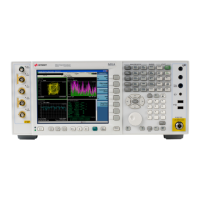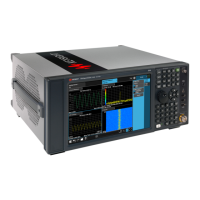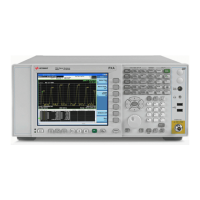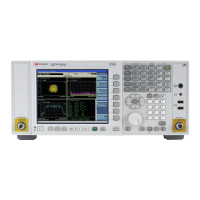3 VMA Mode
3.1 Digital Demod Measurement
# Name A/P Description Unit, if
any
14 Rho A Rho
Floating point number
15 Quad Error A Orthogonal error between the I and Q signals
Floating point number
°
16 Gain
Imbalance
A Gain ratio between the I and Q signals
Floating point number
dB
17 SNR A Signal to noise ratio
Floating point number
dB
18 Amplitude
Ratio of I Eye
A Free decision distance in height of I Eye Diagram and calculated as
percentage of 2BI/(AI+BI). AI and BI are the maximum and
minimum amplitude difference at the decision point of I Eye
Diagram. An ideal signal has a decision height of 100%
%
19 Amplitude
Ratio of Q Eye
A Free decision distance in height of Q Eye Diagram and calculated as
percentage of 2BQ/ (AQ+ BQ). AQ and BQ are the maximum and
minimum amplitude difference at the decision point of Q Eye
Diagram. An ideal signal has a decision height of 100%
%
20 Time Ratio of I
Eye
A Free decision distance in width of I Eye Diagram and calculated as
percentage of 2B’I/(A’I+B’I). A’I and B’I is the maximum and
minimum zero-cross time width in I Eye Diagram. An ideal signal
has a decision width of 100%
%
21 Time Ratio of Q
Eye
A Free decision distance in width of Q Eye Diagram and calculated as
percentage of 2B’Q/ (A’Q+ B’Q). A’Q and B’Q is the maximum and
minimum zero-cross time width in Q Eye Diagram. An ideal signal
has a decision width of 100%
%
Modulation Formats: Offset QPSK, Shaped Offset QPSK
# Name A/P Description Unit, if
any
1 Transmit Power A Transmit power
Floating point number
dBm
2 RMS EVM A A floating point number of EVM over the entire measurement
area
%
3 Peak EVM P A floating point number of the peak EVM in the measurement
area
%
4 Peak EVM Index P Location of the symbol that has the largest EVM
5 RMS Magnitude
Error
A A floating point number of the average magnitude error over
the entire measurement area
%
6 Peak Magnitude
Error
P A floating point number of the peak magnitude error in the
measurement area
%
Vector Modulation Analyzer Mode User's &Programmer's Reference 188

